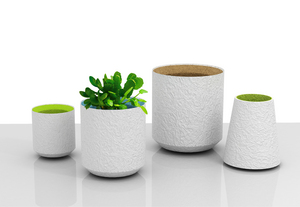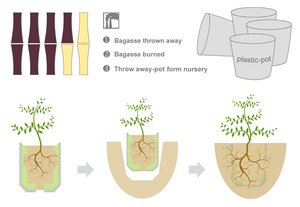



Bagasse Flowerpot
Environmental flowerpot
This new flowerpot design uses bagasse, the fibrous matter that remains after sugarcane stalks are crushed to extract their juice. Approx. 10 tons of sugarcane produce nearly 3 tons of bagasse and it is often simply thrown away or burned as garbage. This is an innovative new way in which this waste can be put to effective use. The inner wall of the flower pot is made of bagasse and it serves as fertilizer for the growing plant. The pot can then be transplanted together with the plant into the soil to grow further. The outer wall also consists of pressed bagasse and will slowly degrade over time.
Design for living - selected by Charles O. Job This particular plant pot is not only an empty vessel. Once dug into the soil, it will disintegrate and continue nourishing its precious content as a fertiliser. An intelligent use of a waste product that would otherwise have been burnt, resulting in more polluting.
Client / Manufacturer
Jiangnan University
Hangzhou, CNJiangnan University
Hangzhou, CN
